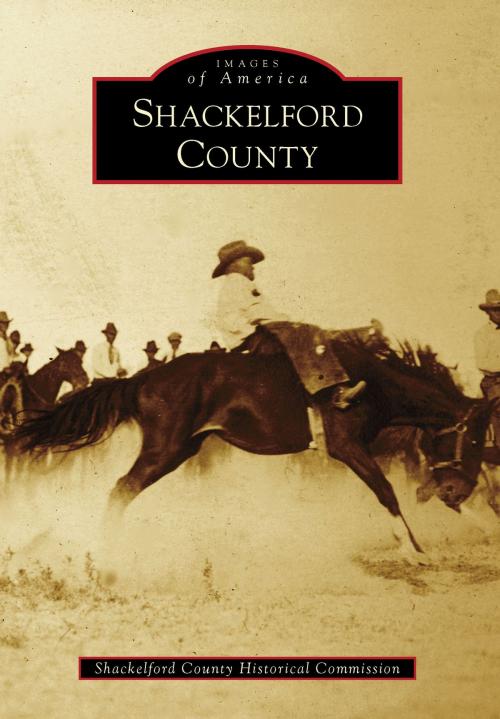| Author: | Shackelford County Historical Commission | ISBN: | 9781439643082 |
| Publisher: | Arcadia Publishing Inc. | Publication: | April 28, 2014 |
| Imprint: | Arcadia Publishing | Language: | English |
| Author: | Shackelford County Historical Commission |
| ISBN: | 9781439643082 |
| Publisher: | Arcadia Publishing Inc. |
| Publication: | April 28, 2014 |
| Imprint: | Arcadia Publishing |
| Language: | English |
One-hundred-fifty miles west of Dallas, on a gently rolling prairie that was once the predatory domain of the Plains Indians, lies Shackelford County. Anglo-American settlers began arriving in the 1850s to raise livestock and cultivate crops near the Clear Fork of the Brazos River. To protect the settlers from the Indians, the US Army established Fort Griffin in 1867. In true Wild West fashion, the raucous town of Fort Griffin sprang up nearby to service the soldiers, cattle drovers, and buffalo hunters. In 1874, Albany became the county seat, and with the arrival of the Texas Central Railroad in 1881, then the oil and gas boom in 1910, both Albany and Moran flourished while Fort Griffin folded. Today, Shackelford County�s economy is based on cattle ranching, farming, petroleum, and hunting. Visitors enjoy shopping Albany�s beautifully restored Main Street and taking in the Old Jail Art Center, the stately limestone courthouse, the Fort Griffin State Historic Site, and the Fort Griffin Fandangle.
One-hundred-fifty miles west of Dallas, on a gently rolling prairie that was once the predatory domain of the Plains Indians, lies Shackelford County. Anglo-American settlers began arriving in the 1850s to raise livestock and cultivate crops near the Clear Fork of the Brazos River. To protect the settlers from the Indians, the US Army established Fort Griffin in 1867. In true Wild West fashion, the raucous town of Fort Griffin sprang up nearby to service the soldiers, cattle drovers, and buffalo hunters. In 1874, Albany became the county seat, and with the arrival of the Texas Central Railroad in 1881, then the oil and gas boom in 1910, both Albany and Moran flourished while Fort Griffin folded. Today, Shackelford County�s economy is based on cattle ranching, farming, petroleum, and hunting. Visitors enjoy shopping Albany�s beautifully restored Main Street and taking in the Old Jail Art Center, the stately limestone courthouse, the Fort Griffin State Historic Site, and the Fort Griffin Fandangle.















